Did you know the smallest muscle in the human body is only 1 mm long?!
It's called the stapedius muscle and found in the ear and its job is to support the tiny bones in the ear.
.jpg)
Muscle cells are specialised cells and they work together to form muscle tissue. Muscles work really hard and in order to do their job they have certain adaptations, for example they have lots of mitochondria. Mitochondria is an organelle where energy is produced from respiration. Muscles also have a good supply of blood. Blood carries oxygen which is also needed for respiration, along with glucose from our food to produce energy.
Why do muscles need so much energy? So they can contract (shorten/tighten). This allows them to pull on bones to allow movement.
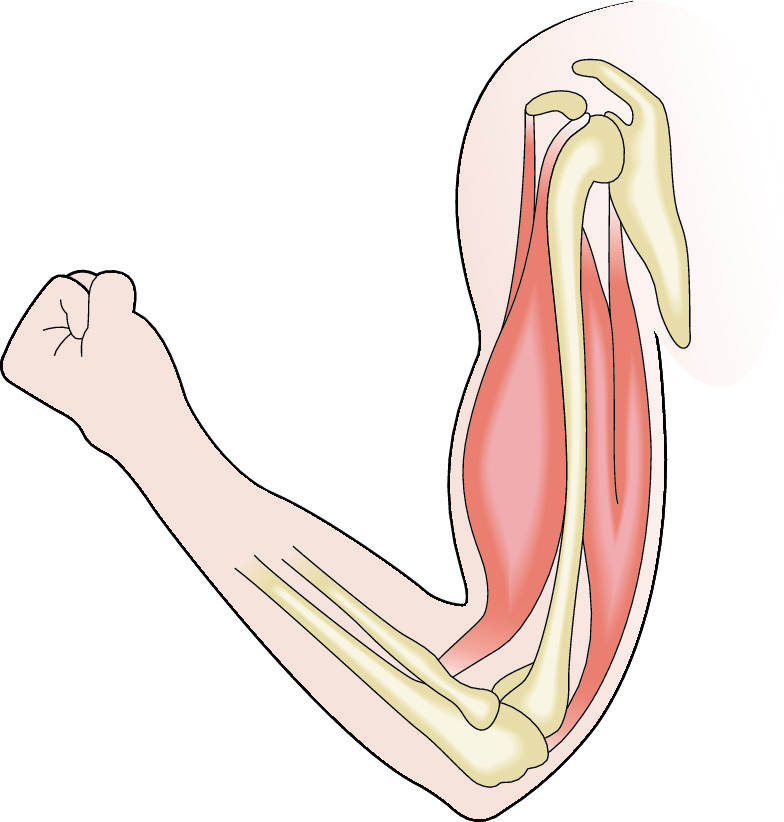
Skeletal muscles are the main group of muscle found in the body. Tendons attach muscles to the bone. We can see from the image above that when a muscle contracts, it gets shorter and thicker and ends up pulling on a tendon which pulls on the bone it's attached to, making it move. A force is produced by the muscle (you may remember from your physics lessons that forces are measured in Newtons). When muscles stop contracting, they relax. This means no force is produced.
In order to move a bone at a joint, two muscles need to work together, this is called an antagonistic pair.
This interaction between muscles and bones in the body is known as biomechanics.
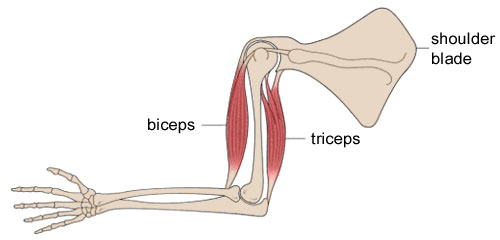
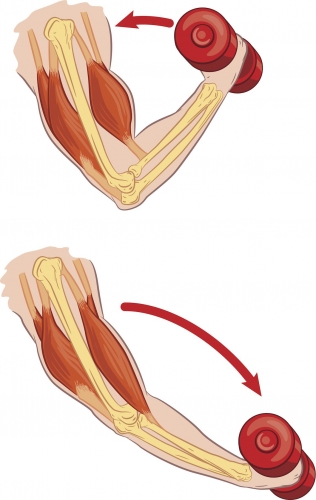
The biceps and triceps are the muscles in our upper arm - they're an antagonistic pair. When the biceps contract, the triceps relax and the arm bends towards the body. You can see this in the image above - the biceps become shorter. When the triceps contract, the biceps relax, extending the arm away from the body.
Other examples of antagonistic muscles can be seen in our leg:
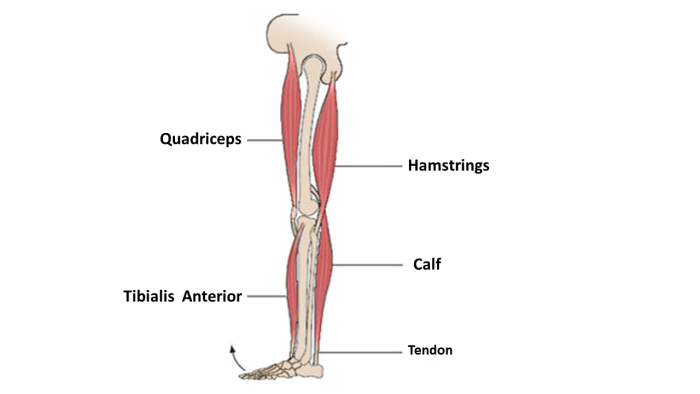
In the upper part of the leg we have the quadriceps and hamstrings. Here, if the quadriceps relax and the hamstrings contract, the knee bends. If the quadriceps contract, the hamstrings relax causing the knee to extend.
The tibialis anterior muscle is found at the front of our lower leg, and its antagonistic pair is the calf muscle. When the tibialis anterior contracts (and calf muscle relaxes) it causes the foot and toes to pull upwards. When the calf muscle contracts (and tibialis anterior muscle relaxes) it causes the foot and toes to point, something you may need when doing gymnastics or ballet!
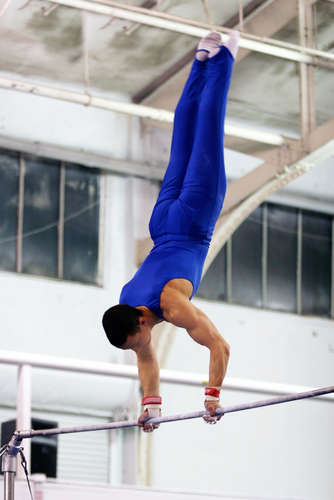
In this activity, we're going to explain how antagonistic muscles cause movement.








